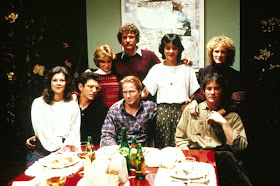An Eiffel Tower over a road in Hebei province. Image Source: Robert Harding/World Imagery/Corbis via WSJ.
In February of this year, the Wall Street Journal reported on Chinese fakes, knock-offs, copies and duplicates of western goods, landmarks and famous buildings. It is a great example of how globalization can spawn confusion and cognitive dissonance. A caveat: some critics of related reports assumed that this story was part of an anti-Chinese wave in the western media. Even if it is, it still exemplifies the Millennial taste for twins, doppelgangers and facsimiles.
Venice Water Town, Hangzhou. Image Source: Image Source: Bianca Bosker via Atlas Obscura.
In the west, copies are derivative, inferior products. Almost always, respect goes first and foremost to an original inventor, creator, designer or architect. Copies are considered to be disrespectful and unoriginal because they violate the western principles of intellectual and commercial creation and ownership. Those principles derive from
John Locke's
labour theory of property, "a
natural law theory that holds that property originally comes about by the exertion of labor upon natural resources." You own what you create. And if you created it first, then you get the credit for breaking ground first. There are some exceptions, particularly in American cities like Las Vegas.
Luodian Town, a Scandinavian-themed town. Images Source: Bianca Bosker via Atlas Obscura.
But generally speaking, in western eyes, Chinese fakes constitute an admission that western creations (and even culture) are superior, and all the Chinese can do is furnish pale imitations of models established by stronger societies.
This is a misunderstanding.
The
Wall Street Journal described a theory from author Bianca Bosker, namely,
that when the Chinese make copies of another society's best goods and greatest buildings, they are asserting their cultural dominance over the other society. The other society is being symbolically diminished, incorporated and absorbed:
This "duplitecture" is not meant to flatter
the West, nor is it a form of "self-colonization." The copies are built
as monuments to China's technological prowess, affluence and power. The
Chinese have seized on the icons of Western architecture as potent
symbols for their own ascension to—and aspiration for—global supremacy.
It
is an impulse with deep roots in Chinese architectural tradition,
dating back thousands of years. In pre-modern China, emperors
demonstrated their dominance by re-creating rival territories within
their own: Sprawling imperial parks, which featured flora and fauna
assembled from remote lands, buttressed rulers' authority by showing
their ability to both create and possess an elaborate facsimile of the
known universe.
China's emperors also
used copycat buildings to convey their mastery—actual or
anticipated—over their adversaries. In the third century B.C., the First
Emperor, Qin Shi Huangdi, commemorated his conquest of six rival
kingdoms by ordering that exact replicas of their palaces be built in
his capital. Today, the ersatz Eiffel Towers and Chrysler Buildings
symbolize China's power to control the world by transplanting Europe and
the U.S. into its domain.
Traditional
Chinese attitudes toward replication also help to explain the trend.
While Americans view imitation with disdain, the Chinese have
traditionally taken a more permissive and nuanced view of it. Copying
can be valued as a mark of skill and superiority.
The
BBC reported on the Chinese mash-up of English municipalities - Thames Town:
As you enter Thames Town, the honking and chaos of Chinese city life fall away. There are no more street vendors selling steamed pork buns, and no more men hauling recyclables on tricycles. The road starts to wind, and then, in the distance, you see what looks like a clock tower from a Cotswold village.
"It has this almost dreamlike quality of something European,"
says Tony Mackay, a British architect, and the master planner for the
Thames Town housing scheme and the surrounding district of Songjiang.
When local officials hired Mackay in 2001, he found farms and ducks here.
Today, there are cobbled streets, pubs and half-timbered Tudor houses. There's even a statue of Winston Churchill, and a medieval
meeting hall that advertises chicken wings and beer in Chinese
characters. But Mackay is not happy. "It doesn't look quite right," he says. "It looks false."
Mackay says the architects who took on the designs for the buildings
created a pastiche, throwing together different styles, and abandoning
authenticity. Some of the half-timbered houses are six storeys high, for
example, and the windows on the church just don't look right, he says.
"The proportions are wrong. The use of the different stones
is all wrong. It would never be used like that in the genuine English
church," he says.
The houses in Thames Town were largely bought as investment
properties, so the town has always been quiet. It is only just beginning
to develop a real sense of life and community.
To Mackay, the place looks like a film set. In fact, one Western blogger said it reminded him of the film, The Truman Show. ...
But Fan Yu Zhe couldn't care less. ... Fan and his bride Sun Qi Yao look ... deeply into each
other's eyes as a photo assistant showered them with flower petals. Thames Town is crawling with young couples who want to have their wedding photos taken here. "I love European football, so I'm very interested in things from Europe," says Fan. "I really hope I can visit the real Thames River one day, sit along the
banks, drink a cup of coffee and enjoy the British sunshine."
... Elsewhere in China, there is a replica Eiffel Tower, a mock Tower Bridge - even a recreation of Stonehenge.
Statue of Winston Churchill in Thames Town, Shanghai. Image Source: Bianca Bosker via Atlas Obscura.
I09 reported on China's copycat craze without pinpointing its underlying message. See more copycat buildings from
i09 below the jump.











